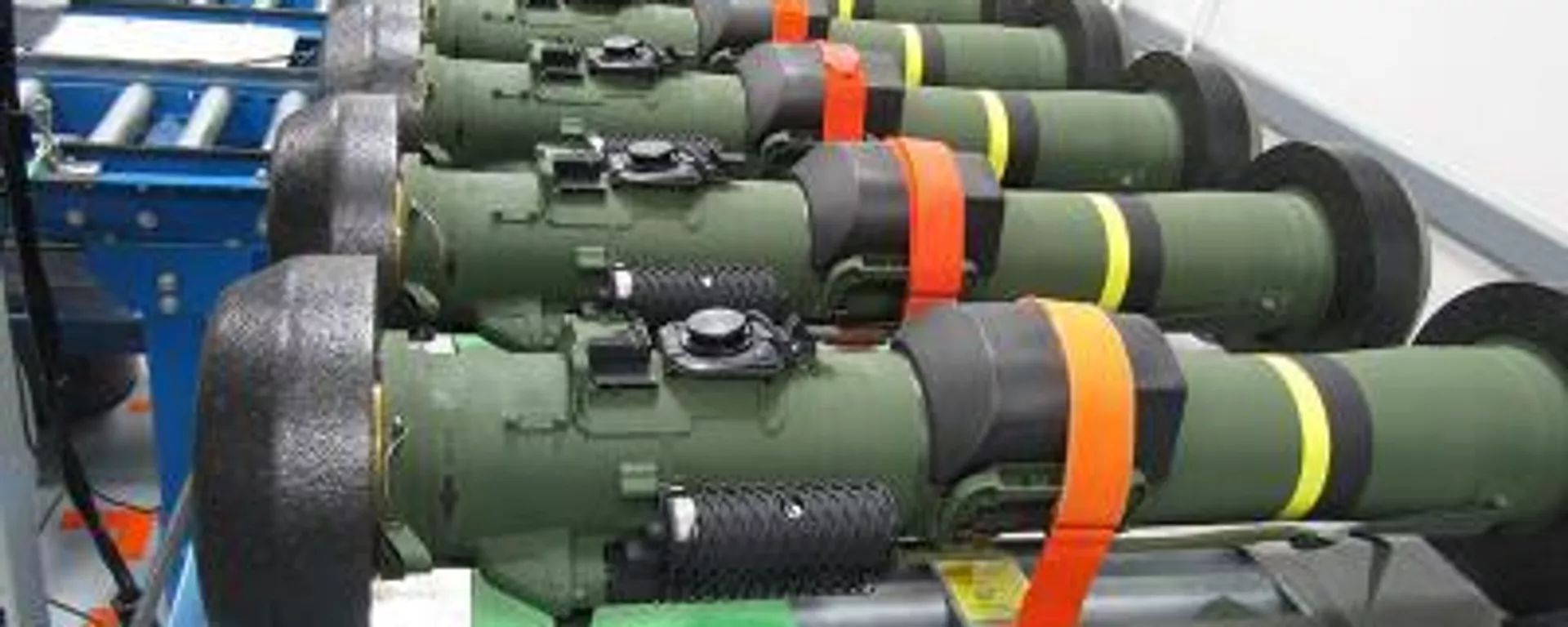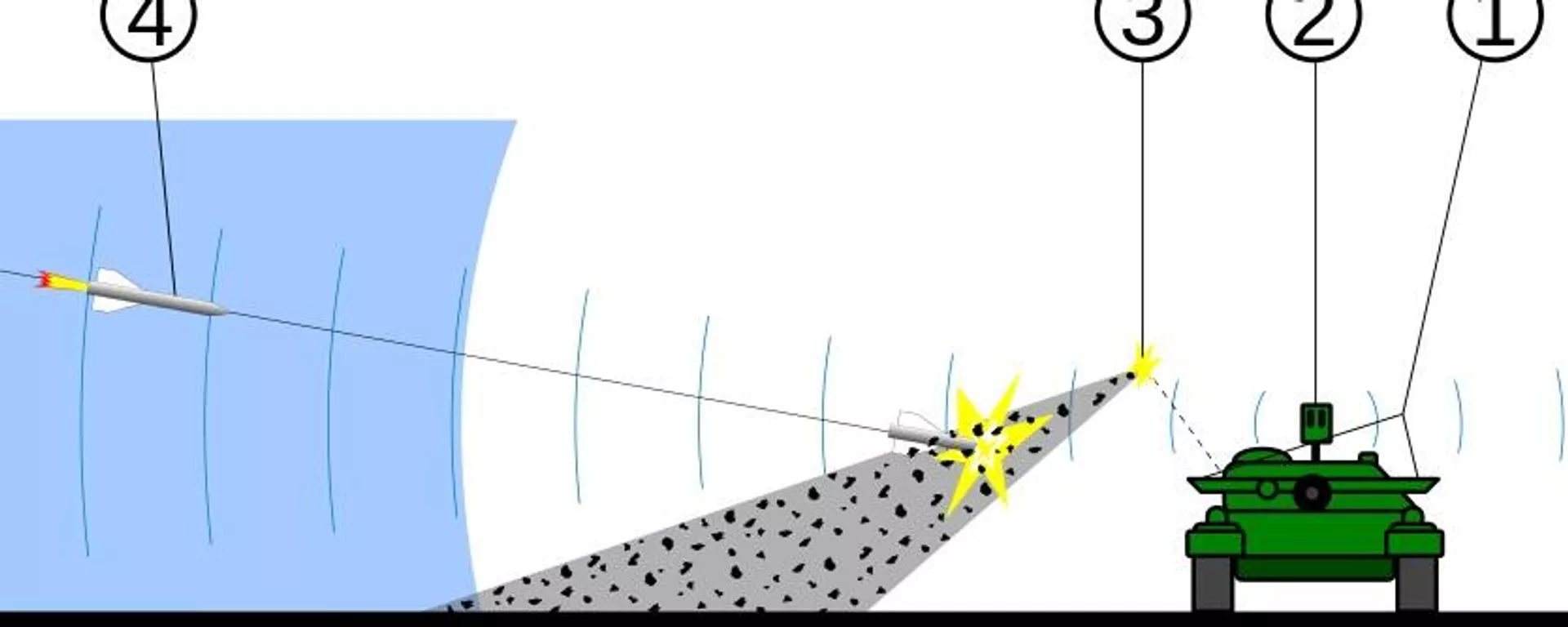The United States rushed massive amounts of weapons, including thousands of Javelins, to Ukraine in the months that followed the start of the Russian military operation in February 2022. According to a US Department of Defense (DOD) fact sheet, the number of the Javelin anti-armor systems pledged to Kiev passed 8,500 by August 2022.
91% Improperly Inventoried
The latest audit report released by the DOD’s Office of Inspector General (OIG) on Monday shed more light on how chaotic the weapon shipments to Ukraine were during the early days of the conflict.
"After reviewing the status of these defense articles in the SCIP-EUM [Security Cooperation Information Portal–End-Use Monitoring] database, we further assessed that XXX of these XXX (91 percent) did not receive an initial or annual inventory since being transferred to Ukraine during 2022. Over half of these items without any inventory data were expendable defense articles, including XXX Javelin missiles and XXX Stinger missiles," the report said, with the specific number of the defense articles redacted as classified information.
The DOD OIG audit report focused on the weapons provided to Ukraine that were designated as "defense articles requiring Enhanced End-Use Monitoring (EEUM)," because those items "incorporate sensitive technology, or are particularly vulnerable to diversion or other misuse."
The EEUM defense articles include Advanced Medium-Range Air-to-Air Missiles (AMRAAM), Air-Intercept Missiles-9X (AIM-9X), Joint Air-to-Surface Standoff Missiles (JASSM), Joint Standoff Weapons (JSOW) and Javelin Missiles and Command Launch Units, Stinger Missiles and Gripstocks, as well as other sensitive military hardware that required such enhanced end-use monitoring.
According to the DOD OIG audit report, about 67% of the delinquent EEUM-designated defense articles, which were not properly tracked or monitored, entered Ukraine in 2022.
The audit report pointed out that many of the defense articles, including the Javelin missiles, delivered to Ukraine in 2022 were no longer in the hands of the Ukrainian Armed Forces (UAF).
"The UAF PNSR [partner nation self-reporting] quarterly inventories for the 4th quarter of 2023 and 1st quarter of 2024 confirmed that many of these EEUM-designated defense articles provided to the UAF in 2022 were no longer on hand," the report said.
Nevertheless, the report suggested that those defense articles could either be lost, destroyed or expended by the UAF without proper record-keeping.
"Because many of the defense articles sent to Ukraine in 2022 never appeared on a quarterly inventory report, we assessed that many of these items were likely lost or destroyed in Ukraine or that UAF personnel expended them in 2022 or 2023 when record keeping of expended EEUM items by serial number was not a formal process under PNSR," the report said.
Compared to the previous audit report on the same EEUM defense articles released in January, the DOD OIG audit report released on Monday acknowledged improvement in the first quarter of 2024, when the number of Javelin missiles without inventory information decreased by 80%.
70% Drop After 2022
The DOD OIG audit report revealed that the number of Javelin missiles provided to Ukraine had dropped sharply after March 31, 2023, while keeping the specific figures redacted as classified information in an infographic within the report.
Fortunately, details from the DOD’s annual budgets reports could fill the blanks and help paint a clearer picture of the drop in the Javelin missiles delivery.
According to its annual budget reports in recent years, the DOD initially planned to purchase only 650 Javelin missiles during fiscal year 2022, with 279 missiles for the US Army, 370 missiles for Foreign Military Sales (FMS) and one missile for the US Marine Corps.
However, the actual number of Javelin missiles the DOD procured during fiscal year 2022 jumped to 7,722, with the US Army taking 6,286 missiles, the US Marine Corps buying 1,005 missiles, 418 missiles going towards Foreign Military Sales, and another 13 missiles for the US Navy.
Similar to other sudden increases of the US military budget during recent years, the sharp increase of the DOD’s procurement of Javelin missiles during fiscal year 2022 most likely served the purpose of replenishment of the weapons provided to Ukraine.
As a result, the additional 7,072 Javelin missiles the DOD ordered during fiscal year 2022 were mostly likely used to replace the same number of missiles delivered to Ukraine.
The DOD’s annual budget reports for fiscal year 2023 and 2024 showed that the growth of additional Javelin missiles procurement slowed significantly after fiscal year 2022.
For fiscal year 2023, the DOD purchased a total of 2,871 Javelin missiles, about 2,221 more than the 650 missiles as original requested for that fiscal year.
The additional 2,221 Javelin missiles for fiscal year 2023 were only about 30% of the additional 7,072 missiles for fiscal year 2022.
For fiscal year 2024, the number of Javelin missiles the DOD procured stayed the same as the original budget request of 1,161 missiles, the DOD’s budget report for fiscal year 2025 showed.
Although the DOD proposed to buy 2,113 Javelin missiles for fiscal year 2025, about 1,500 of those missiles were planned for Foreign Military Sales.
Records from the DOD’s annual budget reports matched the DOD OIG’s audit report's revelation on the sharp drop in the Javelin missiles delivery to Ukraine from 2022 onward.
Figures from the DOD budget reports indicated that the number of Javelin missiles the US provided to Ukraine after 2022 fell by over 70%.
A report released by the Congressional Research Services in September highlighted the potential production bottleneck of the Javelin missiles.
"The length of time required to manufacture Javelin missiles is among the highest of the US military's portfolio of precision munitions, some analysts have found," the report said.
The US Army awarded the largest single-year Javelin contract to date, valued at $1.3 billion, to the Javelin Joint Venture (JJV), a special co-production company set up by key US defense contractors Raytheon and Lockheed Martin, in August.
The JJV said it planned to ramp up the production of Javelin missiles to 3,960 per year by late 2026.
Possible Weapons Trafficking
It is unclear if the sharp drop in the supply of Javelin missiles to Ukraine after 2022 was linked to the early inventory problems mentioned in the DOD OIG's Monday audit report. It was also possible that Ukraine's demand on the battlefield after 2022 led to the US prioritizing the delivery of other weapon systems to Kiev.
According to the DOD OIG audit report, the average cost of the Javelin missile stood at around $78,838 per unit as of May 2024. The sharp drop in the delivery of Javelin missiles to Ukraine could have also resulted from Kiev starting to rely on more cost-effective anti-tank weapons, such as FPV drones, which were much cheaper to produce.
Nevertheless, media reports that emerged in 2023 speculated that some of the US-supplied weapons, including the Javelin missiles, could have been improperly handled and would end up somewhere else.
In a story released in June 2023, US media outlet Newsweek quoted an anonymous high-ranking Israel Defense Forces (IDF) commander, who expressed concerns over the possible transfer of US-supplied weapons to countries in the Middle East, such as Iran, after the weapons were captured by Russia.
Dmitry Medvedev, deputy chairman of Russia's Security Council, said in a post on X in October 2023 that the weapons provided to Ukraine were being actively used against Israel.
"Well, NATO buddies, you've really got it, haven't you? The weapons handed to the Nazi regime in Ukraine are now being actively used against Israel. And it's only going to get worse. Do expect missiles, tanks, and, quite soon, planes fresh from Kiev in the black market," Medvedev wrote.
During US President Joe Biden's meeting with Angolan President Joao Lourenco last week, the two leaders discussed the possible security risk of US-supplied weapons being trafficked from Ukraine to Africa.
"Russia came up briefly in the sense that there's a concern that with the war in Ukraine, there may be arms that will end up in the African continent, and that represents a risk security wise," an unnamed senior official in the Biden administration told reporters during a background briefing on the US president's visit to Angola.

 4 months ago
30
4 months ago
30








 We deliver critical software at unparalleled value and speed to help your business thrive
We deliver critical software at unparalleled value and speed to help your business thrive






 English (US) ·
English (US) ·